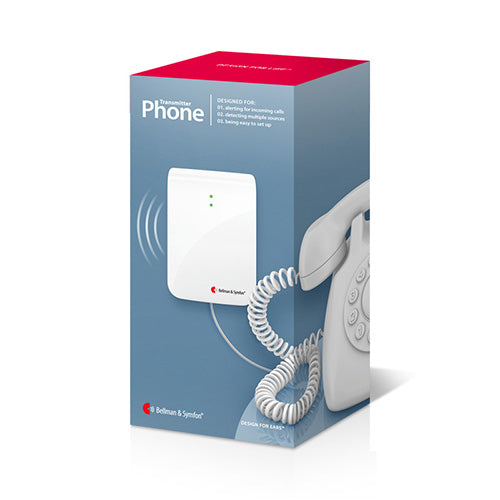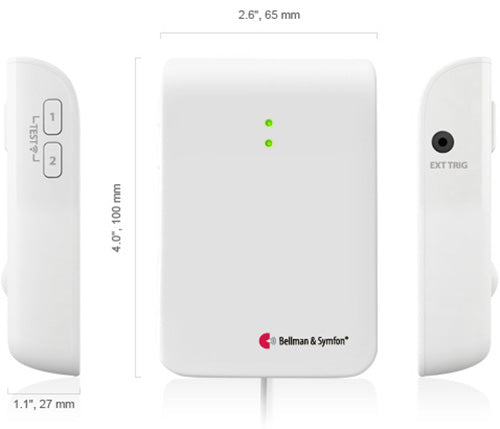



Description
Bellman BE1431 Visit Telephone Multi-Purpose Transmitter
The Bellman Symfon Visit Telephone/Multi-Purpose Transmitter (BE1431) keeps you connected by turning landline phone rings and external triggers into clear wireless alerts across your Bellman Visit system. Sitting between your wall socket and telephone and powered by long-life AA batteries, it sends a Visit radio signal to receivers such as Flash, Alarm Clock, or Wrist units whenever your phone rings, so you do not miss important calls.
Through its external input, it can also work with the Bellman Mobile Phone Sensor, Contact Mat or Magnetic Switch, enabling flexible monitoring of smartphones, doors, windows or bed occupancy for people who are deaf, hard of hearing or in care environments, all without complex wiring or mains power.
Bellman BE1431 Visit Telephone Multi-Purpose Transmitter
- Alerts you to incoming landline calls anywhere in the house by linking the phone line to Bellman Visit receivers for light, sound and vibration notifications.
- Versatile multi-purpose input allows integration with a mobile phone sensor, magnetic switch or contact mat for broader safety and security monitoring.
- Long battery life and simple wall or tabletop installation make it easy to deploy in homes, apartments and care settings without wiring or mains power.
Specifications
Shipping & Delivery
We offer free standard shipping Australia-wide on all qualifying orders.
Once your order is packed, you’ll receive an email notification with tracking details (where available).
For express or faster delivery options, or for more details on delivery times and regional constraints, check out our full Shipping & Delivery Policy or contact us.
NDIS Registered Provider
Fast Shipping
Installation Support Available
12–24 Month Warranties
Expert Support
30 Day Returns
Frequently Asked Questions
What Our Customers Are Saying
Real feedback from verified buyers
Bárbara P
Very easy to navigate on the website, I found what I wanted, and after a few days the device arrived and it was exactly what I needed.
There is a wide range of products available and I am very satisfied with the quality of the product.
Fast shipping, reliable products, great customer service, I had a few doubts about the device that I bought for my parents and I had the total customer support.
Stoo B
As someone that spent probably too much time in clubs in my younger days, my hearing is especially important given the minor issues I'm already experiencing. Hearforless had me covered. Great fast advice, and a great product which has served me well ever since when I've needed (or wanted) to be in noisy environments and look after my hearing. End result is that I can still enjoy things like concerts and hear great sound, without over-taxing already damaged ears.
Grainne Ni C
I use Hear for Less for work from time to time, staff are so knowledgeable and so helpful. They would climb a mountain for you. Would recommend to anyone for professional or private business. Customer service is great, communication is awesome, pricing is in line with competitors, delivery is seamless, items arrive at clients doors quickly, a lot of happy customers! Thanks team for the great work 👍
Anna van T
Unbelievable service, ordered hearing aid batteries at 9:00 in the morning & they were delivered in under an hour to my door. During times of lockdown & COVID that was totally unexpected & much appreciated. They were also much cheaper than what I usually pay. Highly recommend them for outstanding customer service
We’ve supported thousands of Australians with hearing solutions that work, backed by real support, fast shipping, and official NDIS registration. From city centres to remote towns, we're here to help you stay connected, wherever you are.

 Hearing Aid Accessories
Hearing Aid Accessories
 Assistive Listening Devices
Assistive Listening Devices
 Home and Alerts
Home and Alerts
 Laptops, Tablets & Software
Laptops, Tablets & Software
 Amplified Phones
Amplified Phones







